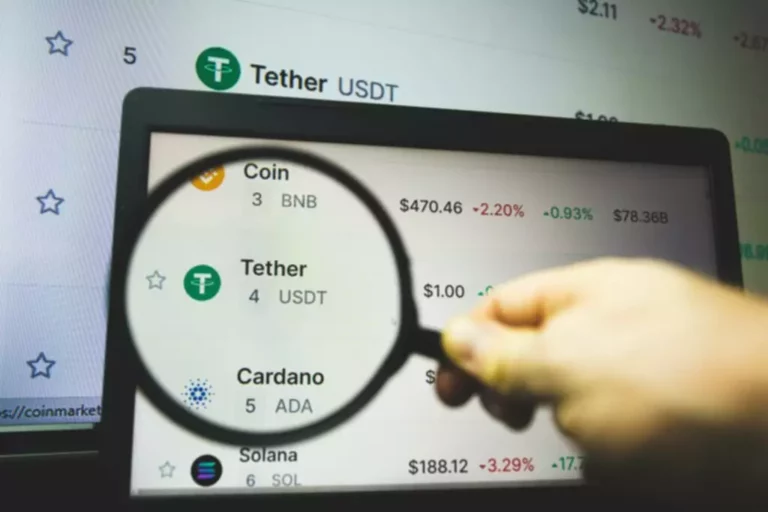The first step in trading the bull pennant pattern is identifying an uptrend. We are looking for a single or series of upward price breaks to do so. If price action is disjointed, it’s essential that a price bar or series of price bars are moving in the same direction with an upward trajectory. A bull pennant forms during a strong upside price move, signaling a temporary pause and potential continuation of the prevailing trend. It gets its name from the pennant shape created by two converging trend lines.
In this blog post we look at what a bull pennant is, its structure, strengths and weaknesses. At a later stage we will also share tips on how to trade a bull pennant and make profit. The price target for pennants is often established by applying the initial flagpole’s height to the point at which the price breaks out from the pennant. Bull pennant trading has converging trend lines during consolidation.
Usually, the pattern only lasts a few days to a few weeks before ending. A breakout is often followed by higher volume, which means that the previous trend is back on track. Knowing how to spot pennant shapes can help buyers make smart choices since these patterns are good signs for successful trading. When prices are in flux, a trader might identify a bull pennant pattern following a sharp price increase on their forex trading chart. For example, after spotting the pattern and confirming it with other technical indicators, the trader can place an order just above the resistance level of the pennant.
After a short time of consolidation, it shows that the price is likely to keep going up. This pattern starts with a strong price rise, which shows that there is a lot of buying interest. After this, the price increase goes into the phase of consolidation, making a small symmetrical triangle. Converging trendlines show that the market is taking a short break while traders take their profits and new buyers get ready to join. A bullish pennant, on the other hand, is also formed after a strong upward move in price, but instead of a flag, the consolidation phase is marked by a symmetrical triangle pattern. The triangle is formed by two converging trend lines, with the price moving back and forth within the triangle.
How to Trade a Bullish Pennant Pattern
This method helps to guess how the price will move after the rise. Also, to improve your chances of earning money with trades, it’s better to use pennant trading patterns along with other basic indicators and research tools. This will give a fuller picture of the market and help people make better decisions. Just like Flag chart patterns, pennants are thought to be good predictors of how the market feels, and they can be seen in both bullish and bearish markets. Bull pennants are continuation patterns that suggest uptrend extension. As you can see in the EUR/USD chart below, they occur amid north-bound price action.
- Understanding this psychological interplay can help traders anticipate market moves and make informed trading decisions.
- This means the pattern often never reaches its apex, forming a flat-topped cone rather than an actual triangle.
- Pennant patterns that don’t work can also be caused by false breakouts.
- One common misconception is that any consolidation after an uptrend qualifies as a bull pennant.
Technical Analysis
Both the bullish pennant and the bull flag are technical analysis patterns that are typically seen in bullish markets. Once the consolidation phase is over, the price typically breaks out of the channel coinjar reviews and continues the upward trend. Pennant chart patterns show that the trend will stop for a while and then continue.
We provide our members with courses of all different trading levels and topics. Our content is packed with the essential knowledge that’s needed to help you to become a successful trader. We are opposed to charging ridiculous amounts to access experience and quality information. Also, we provide you with free options courses that teach you how to implement our trades as well. Traders who learn these ideas may enhance their decision-making processes and overall profitability in a variety of market scenarios.
It is a period of price consolidation that tightens from right to left. One key psychological factor driving pennant patterns is the concept of market indecision. After a significant price movement, whether up or down, traders and investors may take a moment to think thorough their positions.
Is a Pennant Pattern Bullish or Bearish?
This strategy allows them to capitalize on the anticipated breakout, potentially maximizing their reward while managing risks through the use of stop-loss orders. As is the case with all candlestick chart patterns, we have two options for an entry. You can open a trade as soon as the breakout candle closes above the upper line of the pennant i.e. the close is confirmed. Contrary, you can eventually opt to wait for a throwback, when the price action returns to the “crime scene” to retest the broken pennant.
Also mentioned above, there may be broader market considerations that cause pennant formations to fail to form. One common reason is a lack of confirmation from other technical indicators. Pennants, which are similar to flags in terms of structure, have converging trend lines during their consolidation period and last from one to three weeks. The initial move must be met with large volume while the pennant should have weakening volume, followed by a large increase in volume during the breakout. Pennants usually show up as a triangle with two equal sides after a big price change. When trendlines come together, they make this form, which shows a short time of consolidation.
In case of an upward breakout, the price must be close above the higher trendline; whereas, if the price is near below the lower trendline, it shows a downward breakout. I took all the normal indicators I typically add to every chart to help you see clearly. HowToTrade.com helps traders of all levels learn how to trade the financial markets. Overall, statistics show the bull pennant tends to resolve less favorably. One comprehensive study analyzing hundreds of pennants found that the average price rise around 7% after the initial breakout to the upside. Accurate identification requires practice and a keen eye for detail.
Finding the breakout in a pennant pattern requires taking several important factors. Traders should first keep an eye on the price movement as it gets closer to the pennant’s apex. So that, as the consolidation phase draws to a finish, the price begins to move more in one direction. Traders often find possible profit goals by measuring the flagpole’s length and estimating how far away it is from the breaking point.
Both fxpcm the symmetrical triangle and the pennant have conical bodies formed during a period of consolidation. Price consistently reaches higher lows and lower highs, creating two converging trendlines that form this conical shape. A symmetrical triangle chart pattern represents a period of consolidation before the price is forced to breakout or breakdown. A breakdown from the lower trendline marks the start of a new bearish trend, while a breakout from the upper trendline indicates the start of a new bullish trend.
Pennant Chart Pattern
The breakout after a pennant pattern should occur at or near the point where the trendlines converge, called the apex. When dealing with a symmetrical triangle, however, it is optimal for price to break above or below the trendlines one-half to three-quarters of the way through the pattern. This means the pattern often never reaches its apex, forming a flat-topped cone rather than an actual triangle. A breakout is eventually forced one way or the other as price nears the apex. However, a breakout too early or too late may be indicative of a weaker pattern and a less robust continuation.
An important indicator that the breakout is real and not fake is the rise in volume that occurs immediately after the breakout occurs. For extra proof that the breakout is real, traders can look for other technical signs. For example, momentum indicators like the Relative Strength Index (RSI) can help to determine if the breakout is likely to sustain by indicating trading conditions. HowToTrade.com takes no responsibility for loss incurred as a result of the content provided inside our Trading Academy. By signing up as a member you acknowledge that we are not providing financial advice and that you are making the decision on the trades you place in the markets. We have no knowledge of the level of money you are trading with or the level of risk you are taking with each trade.










